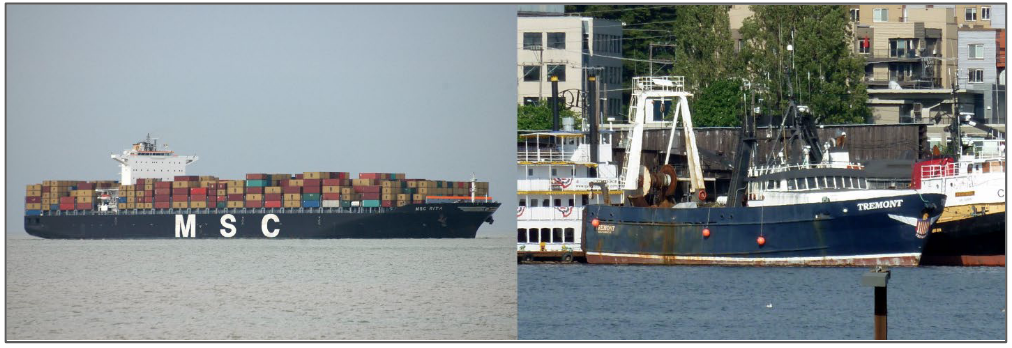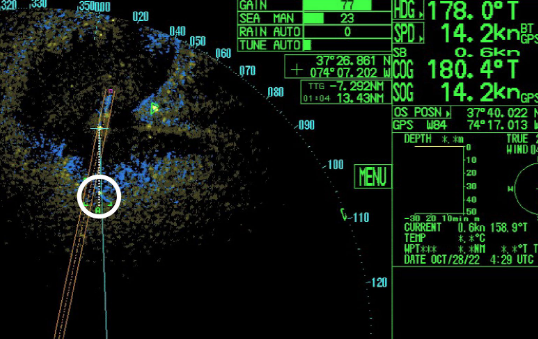(WASHINGTON) — A fishing vessel mate not maintaining a proper lookout and conducting maintenance on critical equipment while underway led to the collision of a containership and fishing vessel, the National Transportation Safety Board (NTSB) said Wednesday. No injuries were reported. Damage to the vessels was estimated at $6.25 million.
On Oct. 28, 2022, while the containership MSC Rita was transiting southbound in the Atlantic Ocean about 55 miles southeast of Chincoteague, Va., the fishing vessel Tremont was transiting north-northeast in the same area. Tremont passed ahead of MSC Rita, but then made a sudden turn back toward the containership. Shortly after, the vessels collided. The collision resulted in hull damage to Tremont, which eventually sank.

The mate on board Tremont told investigators he was attempting to fix the vessel’s gyrocompass while the vessel’s autopilot was engaged. Tremont’s autopilot required heading feedback from the vessel’s gyrocompass and needed a user to input the desired course. As the mate adjusted the gyrocompass to troubleshoot the error, the autopilot processed the heading feedback, causing the vessel to turn toward MSC Rita.
“In this collision, maintenance of a gyrocompass was being conducted while the vessel was underway with its autopilot – which was receiving heading information from the gyrocompass – engaged,” the report said. “Simultaneous operations, often referred to in safety management systems, is a situation where two or more operations occur in the same place at the same time and may interfere with each other. Managing simultaneous operations is an essential element of safety management and safe vessel operation. Before beginning work, mariners should identify hazards associated with working on one piece of equipment that may affect another, such as sensors feeding information to other equipment, and manage those risks to avoid unsafe conditions.”

containership’s X-band radar. MSC Rita photo
The NTSB report also emphasized using digital selective calling (DSC) on modern VHF radios to communicate distress. In this collision, the Tremont captain used VHF to signal distress, but because of the distance between the vessel and the nearest Coast Guard station ashore, the distress call was weak.
“Modern VHF radios are equipped with digital selective calling,” the report said. “Pressing the VHF-DSC button alerts search and rescue authorities and nearby vessels, and automatically provides the vessel’s position. Time permitting, mariners can also select the nature of distress on the radio and verbally communicate with nearby responders. When a vessel is in distress, mariners should use all available means to signal emergency responders, including VHF-DSC.”
The 13 people aboard Tremont abandoned the vessel and were rescued by good Samaritan vessels and a Coast Guard helicopter.
Click here to read the complete report.
– National Transportation Safety Board
